Robust Pressure Sensor in SOI Technology with Butterfly Wiring for Airfoil Integration
Abstract
1. Introduction
2. Sensor Concept
3. Sensor Elements and Their Microfabrication
3.1. Pressure Reference Cavity Etching (a)
3.2. Through Glass Holes by Femtosecond-Laser Ablation (b)
3.3. Piezoresistor Fabrication and Butterfly Wiring (c)
3.4. Hermetic Sealing by Anodic Wafer Bonding (d)
3.5. Through Glass via Plating and Terminal Metallization (e)
3.6. Membrane Thinning (f)
4. Protective Coating
4.1. Preparation of Protective Coatings
4.2. Experimental Setup for Controlled Abrasive Stress
4.3. Damage Quantification
5. Results and Discussion
6. Conclusions and Outlook
Author Contributions
Funding
Data Availability Statement
Acknowledgments
Conflicts of Interest
References
- Radespiel, R.; Heinze, W. SFB 880: Fundamentals of high lift for future commercial aircraft. CEAS Aeronaut. J. 2014, 5, 239–251. [Google Scholar] [CrossRef]
- Beutel, T.; Sattler, S.; El Sayed, M.Y.; Schwerter, M.; Zander, M.; Büttgenbach, S.; Leester-Schädel, M.; Radespiel, R.; Sinapius, M.; Wierach, P. Design of a high-lift experiment in water including active flow control. Smart Mater. Struct. 2014, 23, 077004. [Google Scholar] [CrossRef][Green Version]
- El Sayed, M.Y.; Oswald, P.; Sattler, S.; Kumar, P.; Radespiel, R.; Behr, C.; Sinapius, M.; Petersen, J.; Wierach, P.; Quade, M.; et al. Open- and Closed-Loop Control Investigations of Unsteady Coanda Actuation on a High-Lift Configuration. In Proceedings of the 2018 Flow Control Conference 2018, Atlanta, GA, USA, 25–29 June 2018. [Google Scholar] [CrossRef]
- Berns, A.; Buder, U.; Obermeier, E.; Wolter, A.; Leder, A. AeroMEMS sensor array for high-resolution wall pressure measurements. Sens. Actuators A Phys. 2006, 132, 104–111. [Google Scholar] [CrossRef]
- Berns, A.; Obermeier, E. AeroMEMS Sensor Arrays for Time Resolved Wall Pressure and Wall Shear Stress Measurements; Springer: Berlin/Heidelberg, Germany, 2009; Volume 106, pp. 227–236. [Google Scholar] [CrossRef]
- Schwerter, M.; Gräbner, D.; Hecht, L.; Vierheller, A.; Leester-Schädel, M.; Dietzel, A. Surface-Passive Pressure Sensor by Femtosecond Laser Glass Structuring for Flip-Chip-in-Foil Integration. J. Microelectromech. Syst. 2016, 25, 517–523. [Google Scholar] [CrossRef]
- Radespiel, R.; Semaan, R. Fundamentals of High Lift for Future Civil Aircraft: Contributions to the Final Symposium of the Collaborative Research Center 880, 17–18 December 2019, Braunschweig, Germany; Springer International Publishing: New York, NY, USA, 2020; Volume 145. [Google Scholar]
- Schwerter, M.; Leester-Schädel, M.; Dietzel, A. Waterproof sensor system for simultaneous pressure and hot-film flow measurements. Sens. Actuators A Phys. 2017, 257, 208–215. [Google Scholar] [CrossRef][Green Version]
- Dietzel, A.; van den Brand, J.; Vanfleteren, J.; Christiaens, W.; Bosman, E.; De Baets, J. Ultra-Thin Chip Technology and Applications; Burghartz, J., Ed.; Springer: New York, NY, USA, 2011. [Google Scholar]
- Van den Brand, J.; Kusters, R.; Heeren, M.; van Remoortere, B.; Dietzel, A. Flipchip bonding of ultrahin Si dies onto PEN/PET substrates with low cost circuitry. In Proceedings of the IEEE 3rd Electronics System Integration Technology Conference ESTC, Berlin, Germany, 13–16 September 2010; pp. 1–6. [Google Scholar]
- Van den Brand, J.; Kusters, R.; Barink, M.; Dietzel, A. Flexible embedded circuitry: A novel process for high density, cost effective electronics. Microelectron. Eng. 2010, 87, 1861–1867. [Google Scholar] [CrossRef]
- Van den Brand, J.; De Baets, J.; Van Mol, T.; Dietzel, A. Systems-in-foil–Devices, fabrication processes and reliability issues. Microelectron. Reliab. 2008, 48, 1123–1128. [Google Scholar] [CrossRef]
- Wallis, G. Field assisted glass sealing. Act. Passiv. Electron. Compon. 1975, 2, 45–53. [Google Scholar] [CrossRef]
- Lee, T.M.; Lee, D.H.; Liaw, C.Y.; Lao, A.I.; Hsing, I.M. Detailed characterization of anodic bonding process between glass and thin-film coated silicon substrates. Sens. Actuators A Phys. 2000, 86, 103–107. [Google Scholar] [CrossRef]
- Frischmuth, T.; Schneider, M.; Maurer, D.; Grille, T.; Schmid, U. Inductively-coupled plasma-enhanced chemical vapour deposition of hydrogenated amorphous silicon carbide thin films for MEMS. Sens. Actuators A Phys. 2016, 247, 647–655. [Google Scholar] [CrossRef]
- Dergez, D.; Schalko, J.; Bittner, A.; Schmid, U. Fundamental properties of a-SiNx:H thin films deposited by ICP-PECVD for MEMS applications. Appl. Surf. Sci. 2013, 284, 348–353. [Google Scholar] [CrossRef]
- Schwerter, M.; Beutel, T.; Leester-Schädel, M.; Büttgenbach, S.; Dietzel, A. Flexible hot-film anemometer arrays on curved structures for active flow control on airplane wings. Microsyst. Technol. 2014, 20, 821–829. [Google Scholar] [CrossRef]
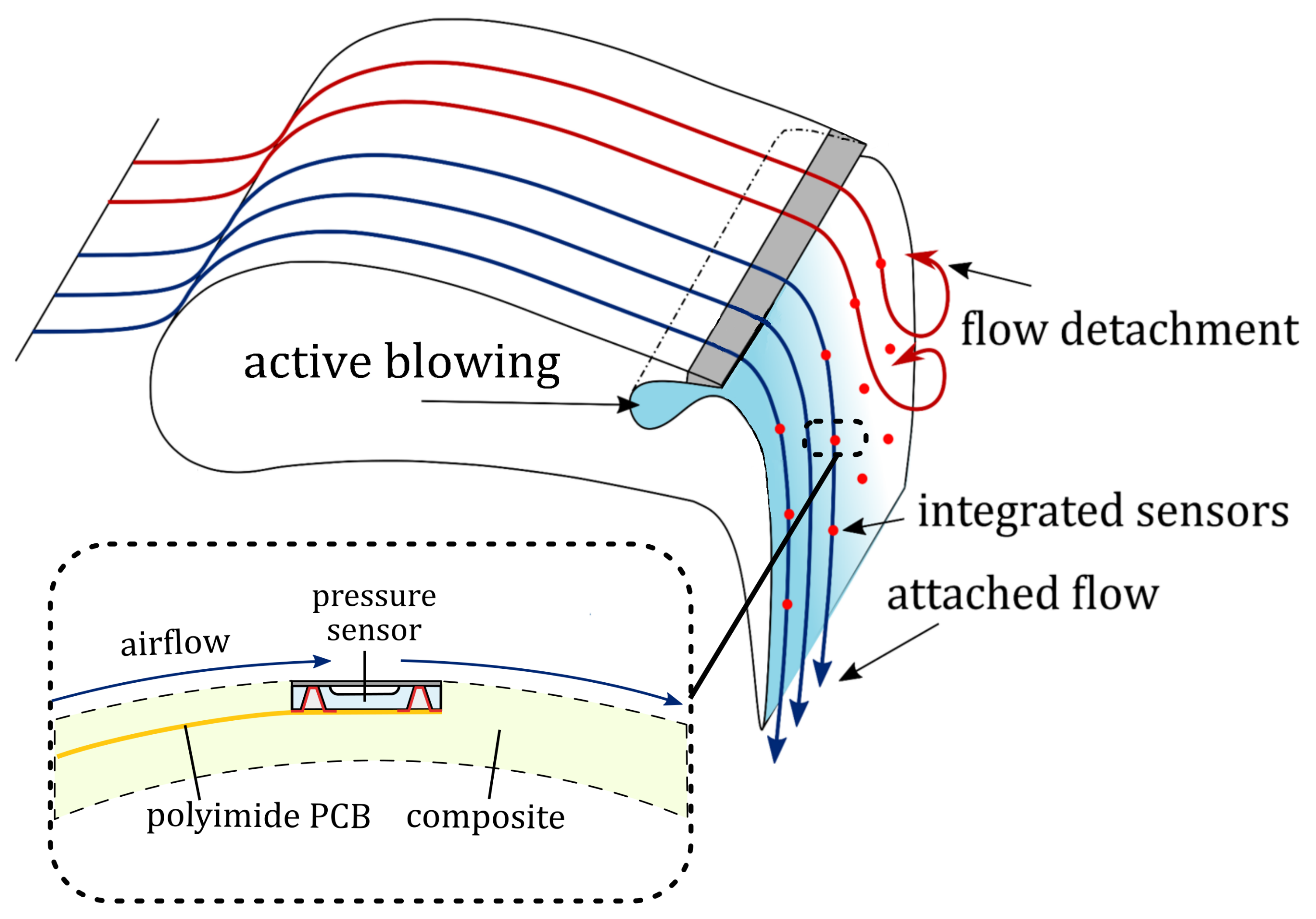



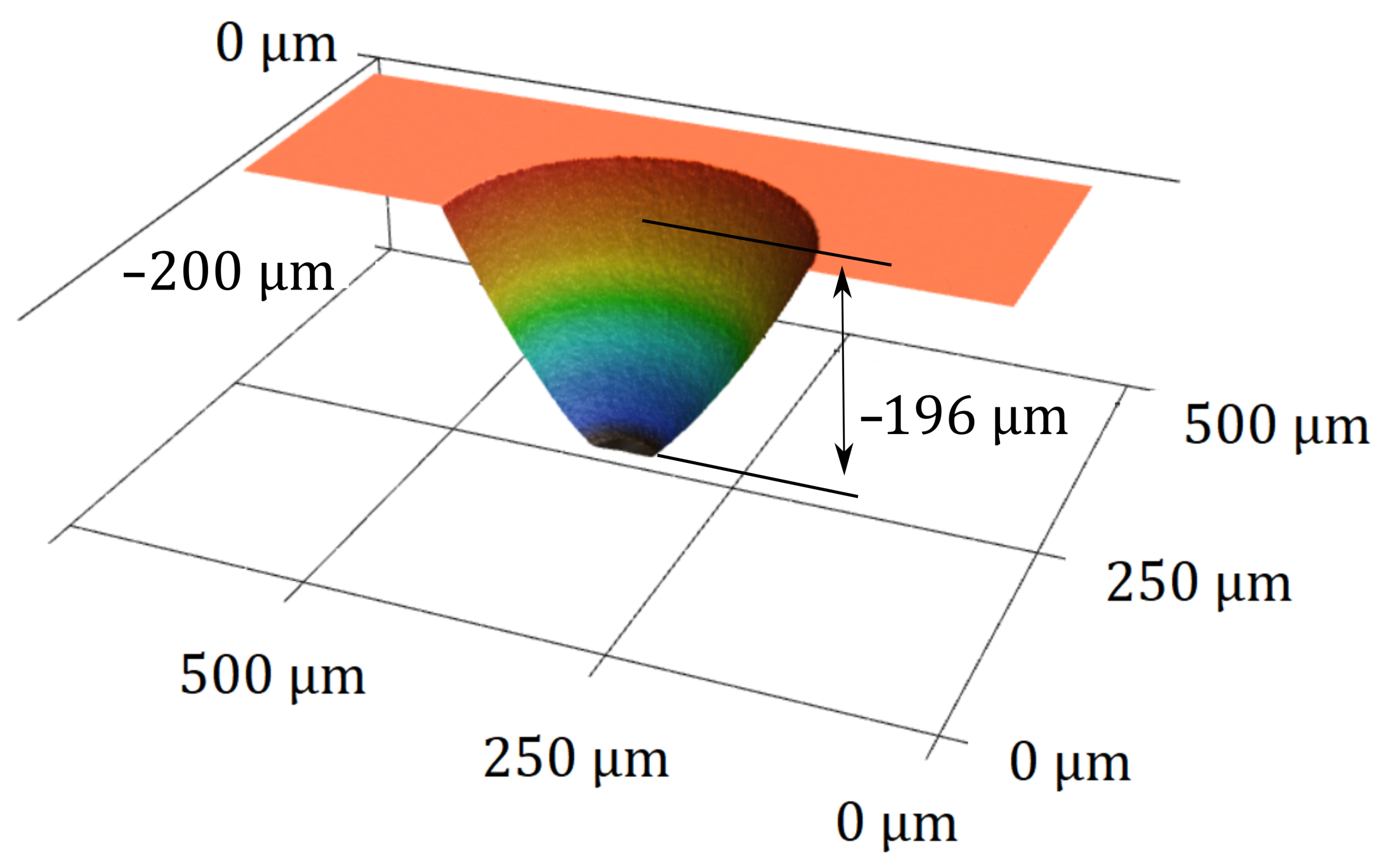


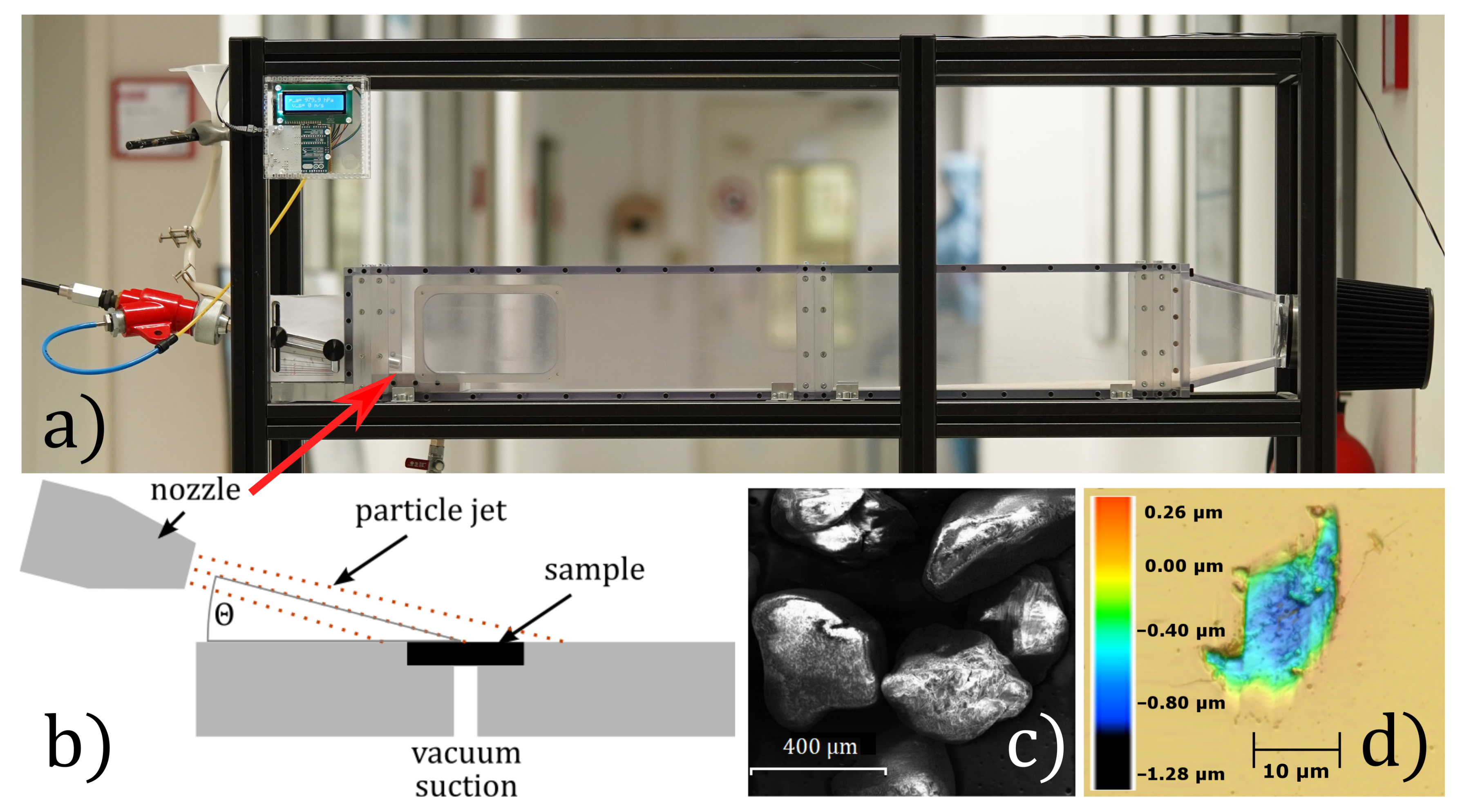
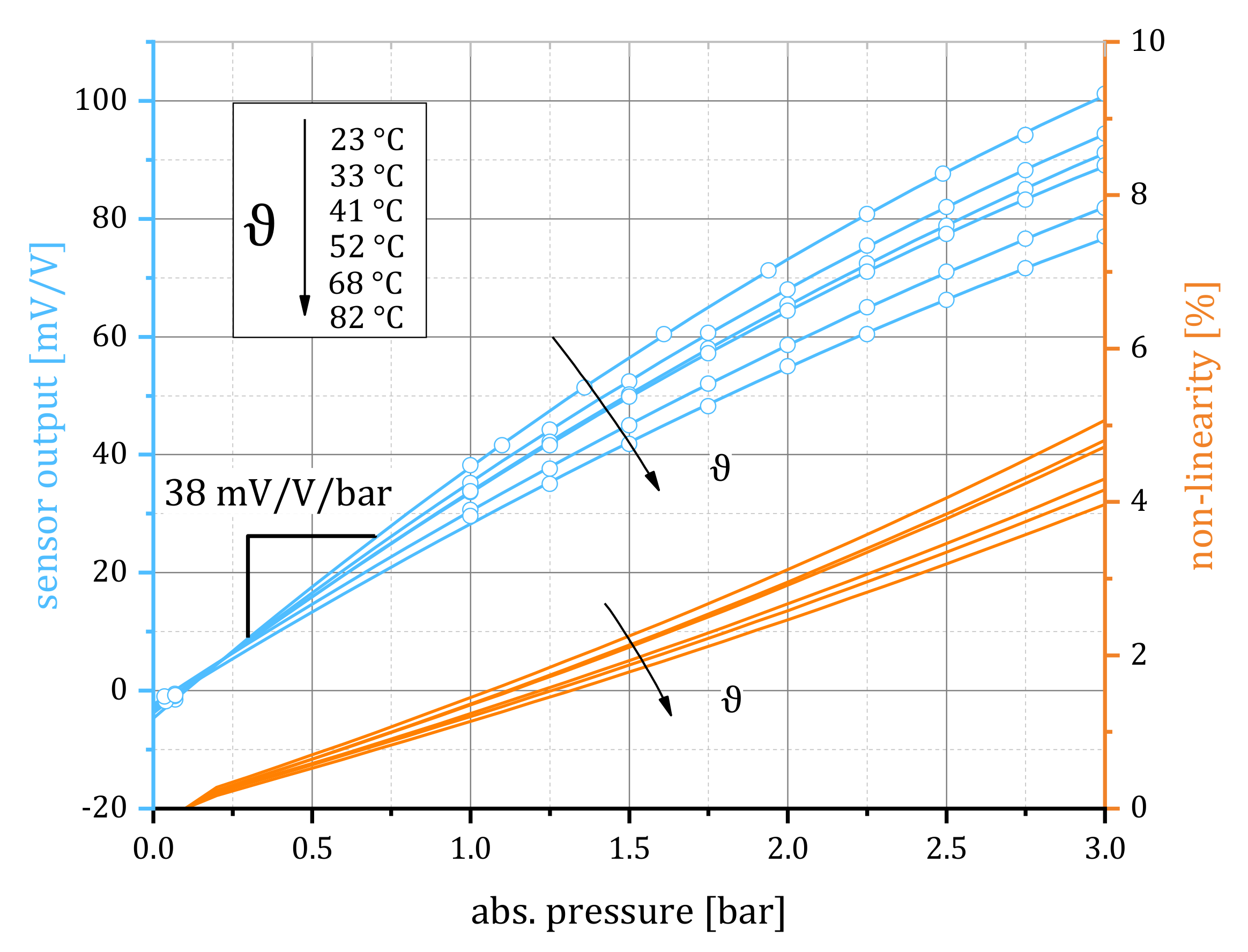
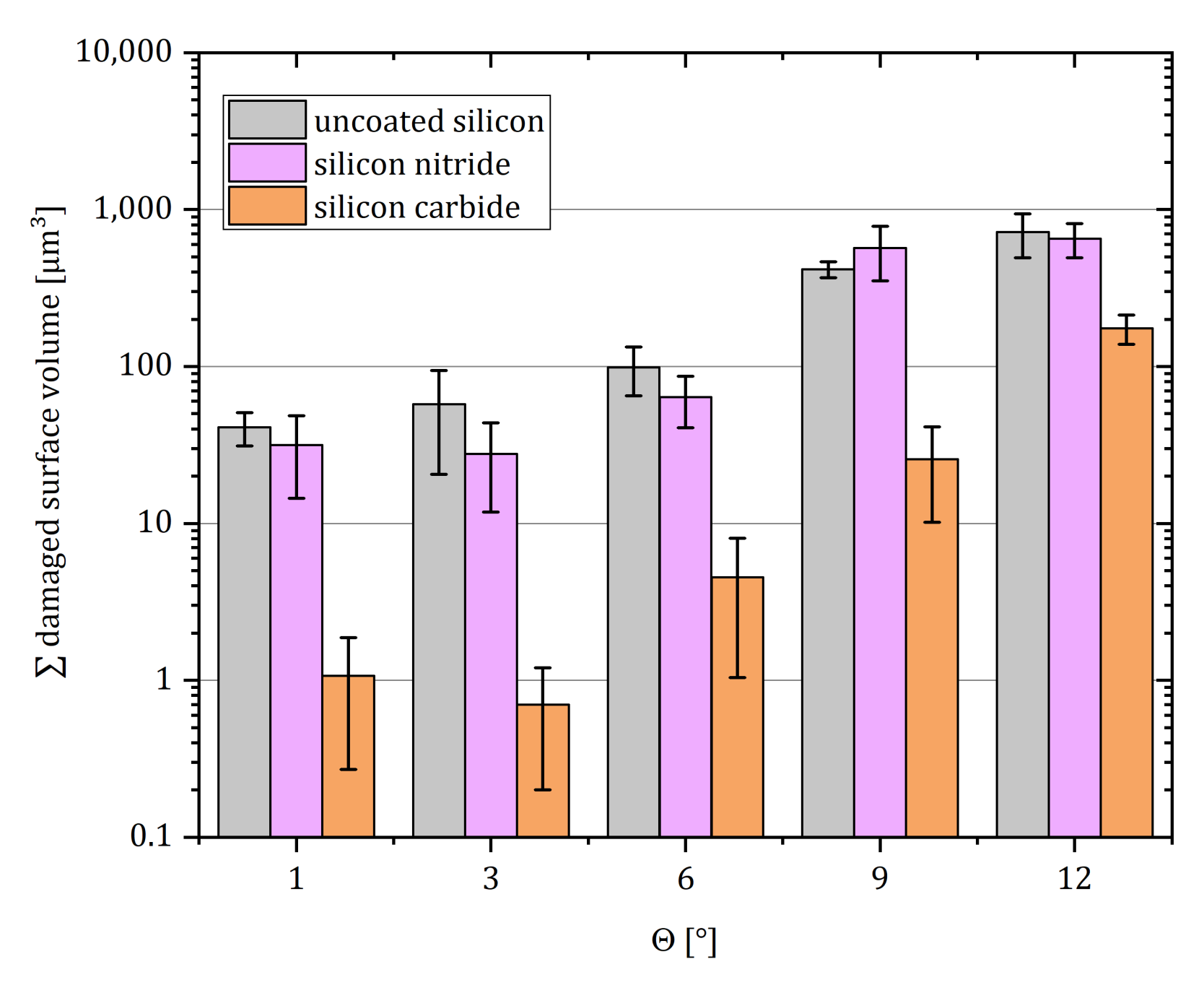
| Parameter | Value |
|---|---|
| Wave length | 1028 |
| Repetitions | 60 |
| Pulse energy | |
| Pulse duration | 236 |
| Scan speed | 500 mm s−1 |
| Repetition rate | 100 |
| Spot diameter | 25 |
| Filling pattern | conc. circles, |
| 1.98 | −0.33 | 41.43 | 21.54 | −19.89 |
| Feature | Device Layer | Oxide Layer | Handle Layer |
|---|---|---|---|
| Type/orientation | N/Ph <100> 0.5 | - | N/Ph <100> 0.5 |
| Thickness | |||
| Resistivity | 1–10 | - | 1–10 |
| Finish | Polished | - | Polished |
| Deposition Parameter | a-SiC:H | a-SiN:H |
|---|---|---|
| CH flow (sccm) | 13.5 | 0 |
| SiH flow (sccm) | 6.5 | 12 |
| N flow (sccm) | 0 | 10 |
| Ar flow (sccm) | 50 | 48 |
| Power (W) | 2000 | 750 |
| Deposition temperature (C) | 250 | 350 |
| Deposition pressure (mTorr) | 10 | 7 |
| Film thickness (nm) | 311 | 320 |
| Film stress (MPa) | −653 | 269 |
Publisher’s Note: MDPI stays neutral with regard to jurisdictional claims in published maps and institutional affiliations. |
© 2021 by the authors. Licensee MDPI, Basel, Switzerland. This article is an open access article distributed under the terms and conditions of the Creative Commons Attribution (CC BY) license (https://creativecommons.org/licenses/by/4.0/).
Share and Cite
Haus, J.N.; Schwerter, M.; Schneider, M.; Gäding, M.; Leester-Schädel, M.; Schmid, U.; Dietzel, A. Robust Pressure Sensor in SOI Technology with Butterfly Wiring for Airfoil Integration. Sensors 2021, 21, 6140. https://doi.org/10.3390/s21186140
Haus JN, Schwerter M, Schneider M, Gäding M, Leester-Schädel M, Schmid U, Dietzel A. Robust Pressure Sensor in SOI Technology with Butterfly Wiring for Airfoil Integration. Sensors. 2021; 21(18):6140. https://doi.org/10.3390/s21186140
Chicago/Turabian StyleHaus, Jan Niklas, Martin Schwerter, Michael Schneider, Marcel Gäding, Monika Leester-Schädel, Ulrich Schmid, and Andreas Dietzel. 2021. "Robust Pressure Sensor in SOI Technology with Butterfly Wiring for Airfoil Integration" Sensors 21, no. 18: 6140. https://doi.org/10.3390/s21186140
APA StyleHaus, J. N., Schwerter, M., Schneider, M., Gäding, M., Leester-Schädel, M., Schmid, U., & Dietzel, A. (2021). Robust Pressure Sensor in SOI Technology with Butterfly Wiring for Airfoil Integration. Sensors, 21(18), 6140. https://doi.org/10.3390/s21186140








